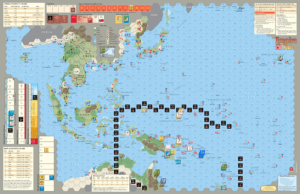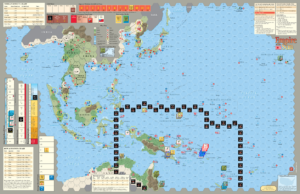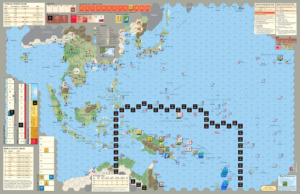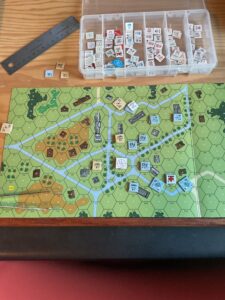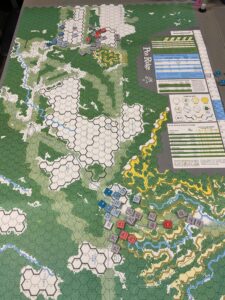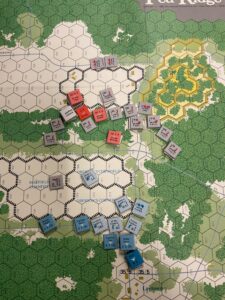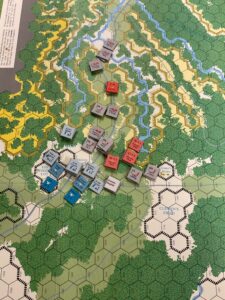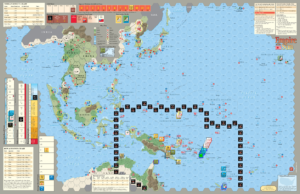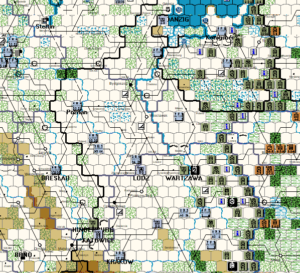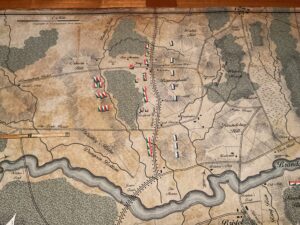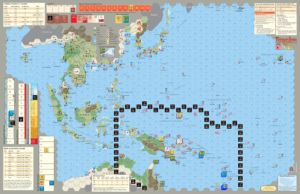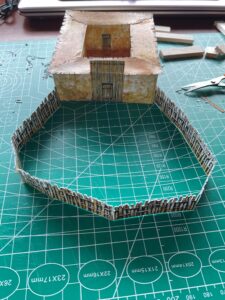I’m determined to get a solid grip on Empire Of The Sun. So, dove back into it early this morning.
Decided to follow the GMT articles cited in my previous post. Did so, and learned just how little I really know about the rules.
What did I learn?
- Bombers (aircraft units with range six or greater)can establish, but don’t negate Zones of Influence (ZOI). I’d used them to negate ZOIs
- The Allies Central Pacific Headquarters (C Pac HQ, Range 25/Efficiency 8) is in play. Hadn’t used it at all.
- A U.S Headquarters can not activate Commonwealth units. I had allowed that.
- HQ with different colors along a diagonal facing line are that way to indicate inter- service rivalries are in effect, limiting a HQ’s ability to activating only Army or Navy units, and not both during an Offensive. I’d followed the interservice rules, but thought the color division meant the HQ was a joint HQ.
It’s a little discouraging to find my rules comprehension still has such significant gaps.
Anyway, I used the Northampton to pin the Japanese Units in Rabaul (by declaring a Battle Hex) so they could not interfere with the Guadalcanal landing. The ensuing fight cost me the Northampton, but the landings succeeded. The invasion force dispersed, as per the GMT article, with the activated Japanese (having played the Battle Of Savo Island Reaction Card) using Post-Battle Movement to also sail to dispersed positions.
Here’s a shot after play of the US Turn 3 initial card.
